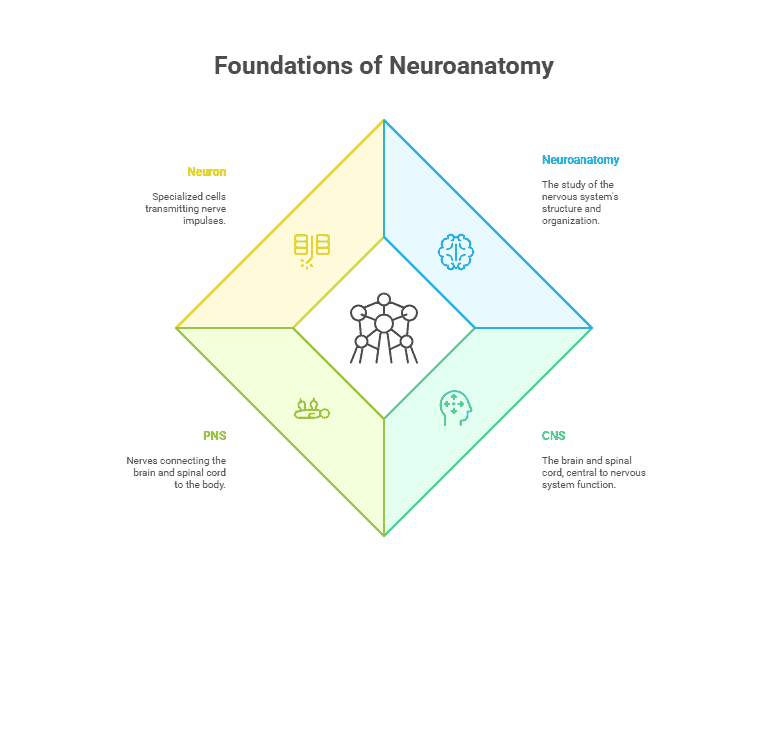Neuroanatomy is the study of the structure and organization of the nervous system, which is a complex network of cells that allows us to perceive, understand, and interact with the world around us. The nervous system is divided into two main parts: the central nervous system (CNS), which includes the brain and spinal cord, and the peripheral nervous system (PNS), which consists of nerves that connect the CNS to the rest of the body.
The Brain
The brain is the command center of the nervous system and is responsible for processing information, controlling body functions, and regulating emotions. It is divided into different regions, each with specific functions. The cerebral cortex, for example, is responsible for higher-level thinking and decision-making, while the cerebellum coordinates movement and balance.
The Spinal Cord
The spinal cord is a long, thin bundle of nerves that extends from the brain down the back. It serves as a communication pathway between the brain and the rest of the body, allowing for the transmission of signals that control movement and sensation. The spinal cord also plays a crucial role in reflex actions, such as pulling your hand away from a hot stove.
The Peripheral Nervous System
The peripheral nervous system consists of nerves that branch off from the spinal cord and extend throughout the body. These nerves carry information to and from the CNS, allowing us to interact with our environment. The PNS is further divided into the somatic nervous system, which controls voluntary movements, and the autonomic nervous system, which regulates involuntary functions like heart rate and digestion.
Neurons and Synapses
At the core of the nervous system are neurons, specialized cells that transmit electrical and chemical signals. Neurons communicate with each other at junctions called synapses, where neurotransmitters are released to relay information from one cell to another. This intricate network of connections allows for the rapid transmission of signals throughout the nervous system.
Summary
Neuroanatomy is the study of the structure and organization of the nervous system, which includes the brain, spinal cord, and peripheral nerves. The brain serves as the command center, while the spinal cord acts as a communication pathway between the brain and the body. The peripheral nervous system extends throughout the body and allows for interaction with the environment. Neurons and synapses play a crucial role in transmitting signals within the nervous system.
Key Takeaways:
- The nervous system is a complex network of cells that allows for communication throughout the body.
- Neuroanatomy is the study of the structure and organization of the nervous system.
- The nervous system can be divided into the central nervous system (CNS) and the peripheral nervous system (PNS).
- The CNS consists of the brain and spinal cord, while the PNS includes nerves that extend throughout the body.
- Understanding neuroanatomy is essential for understanding how the nervous system functions and how it can be affected by injury or disease.
Key Terms:
- Neuroanatomy: The study of the structure and organization of the nervous system.
- Nervous System: The network of nerve cells and fibers that transmits nerve impulses between parts of the body.
- Central Nervous System (CNS): The part of the nervous system consisting of the brain and spinal cord.
- Peripheral Nervous System (PNS): The part of the nervous system outside the central nervous system, including the nerves that connect the brain and spinal cord to other parts of the body.
- Neuron: A specialized cell transmitting nerve impulses; a nerve cell.
